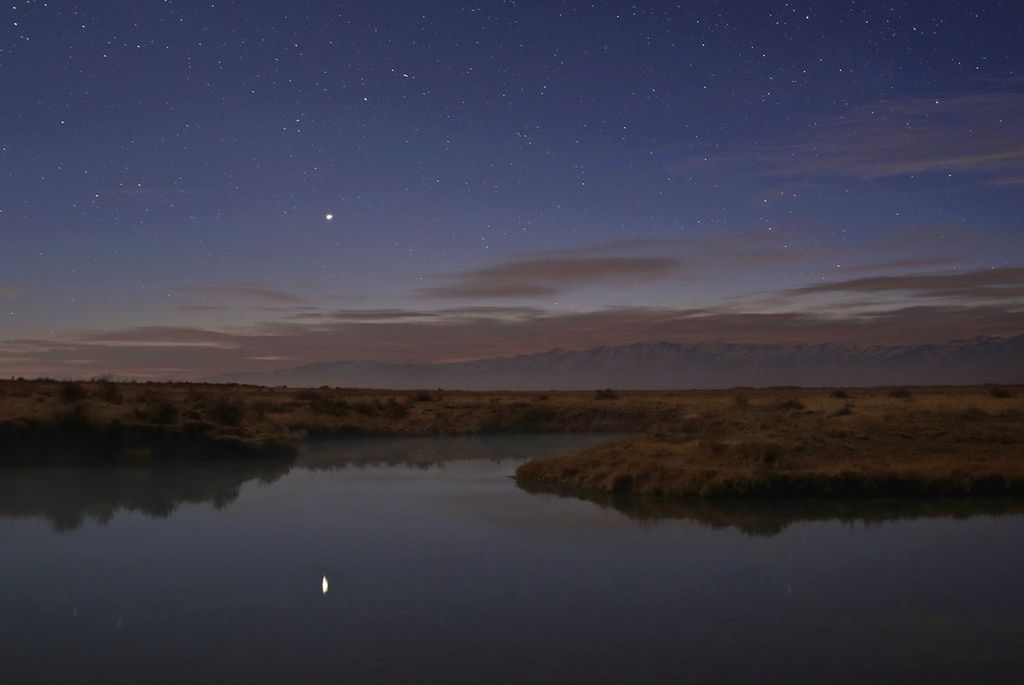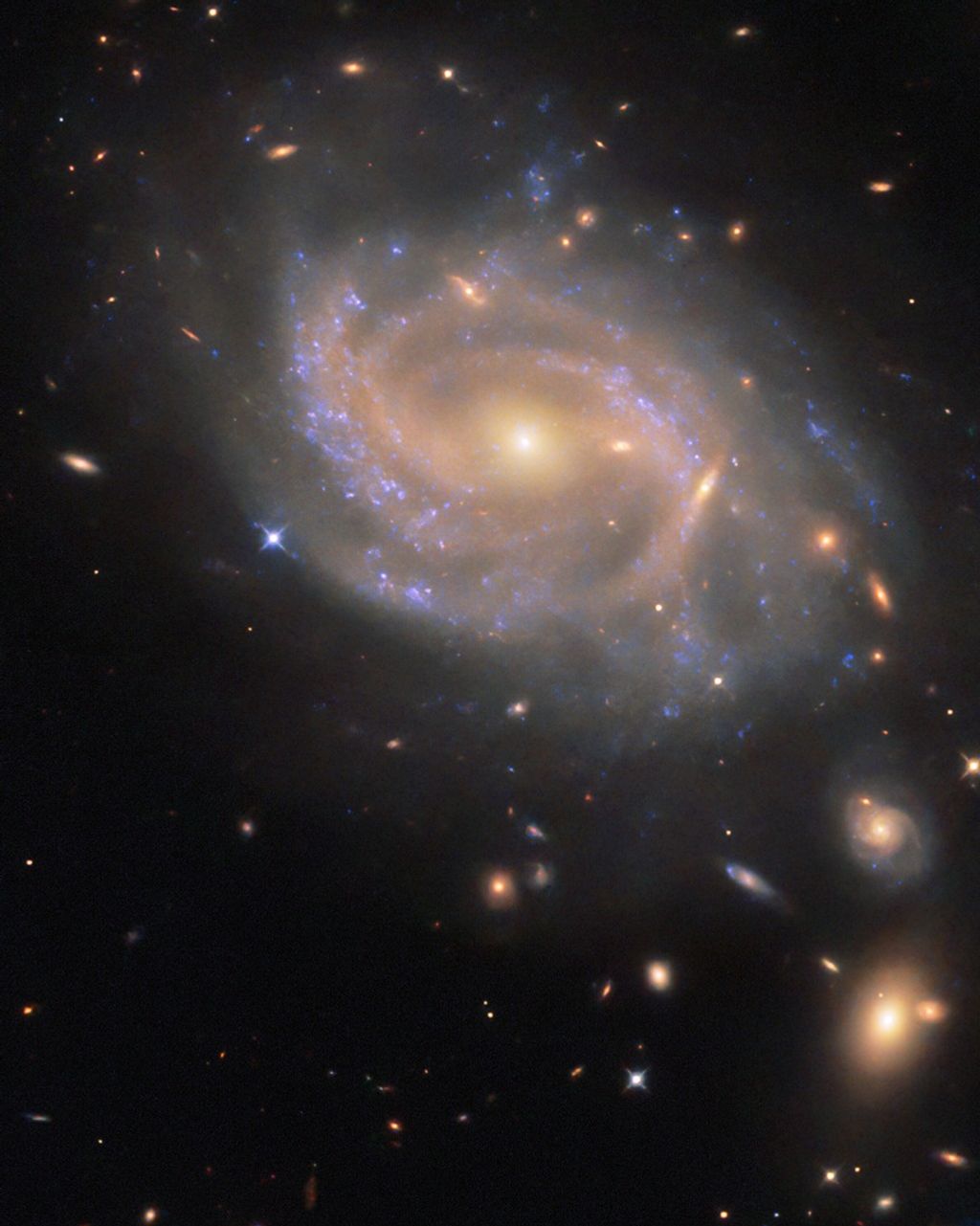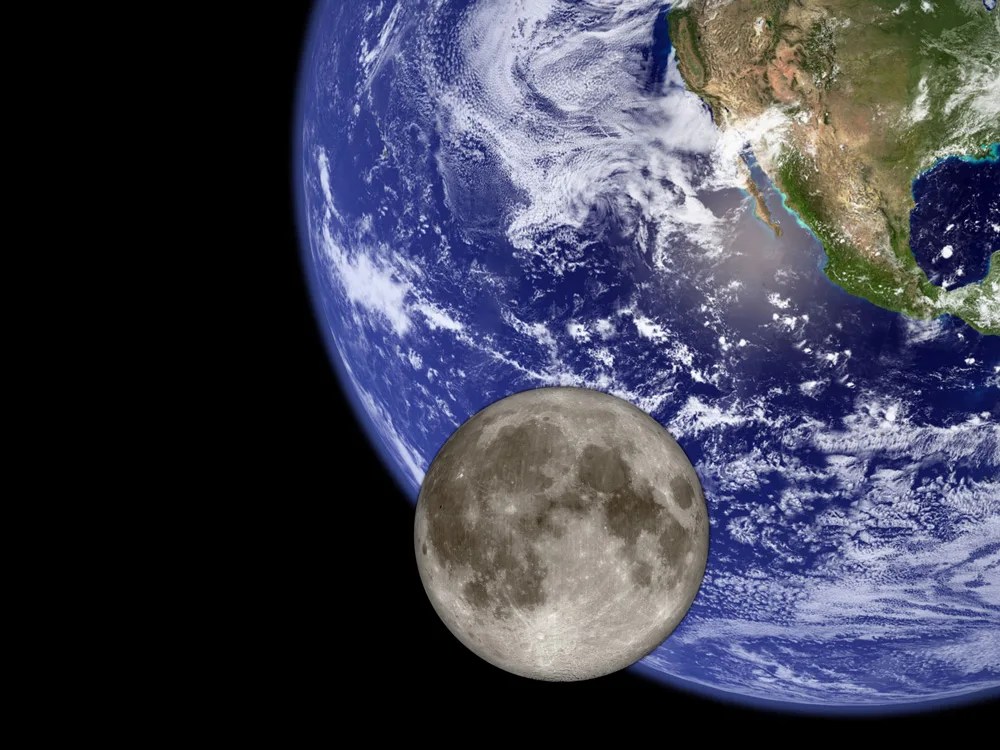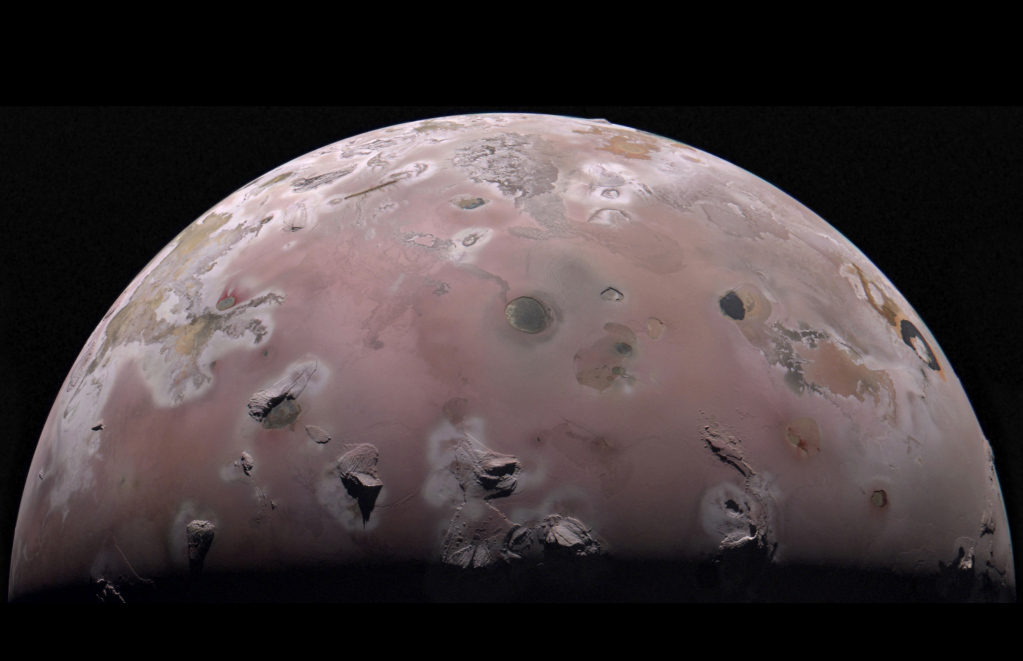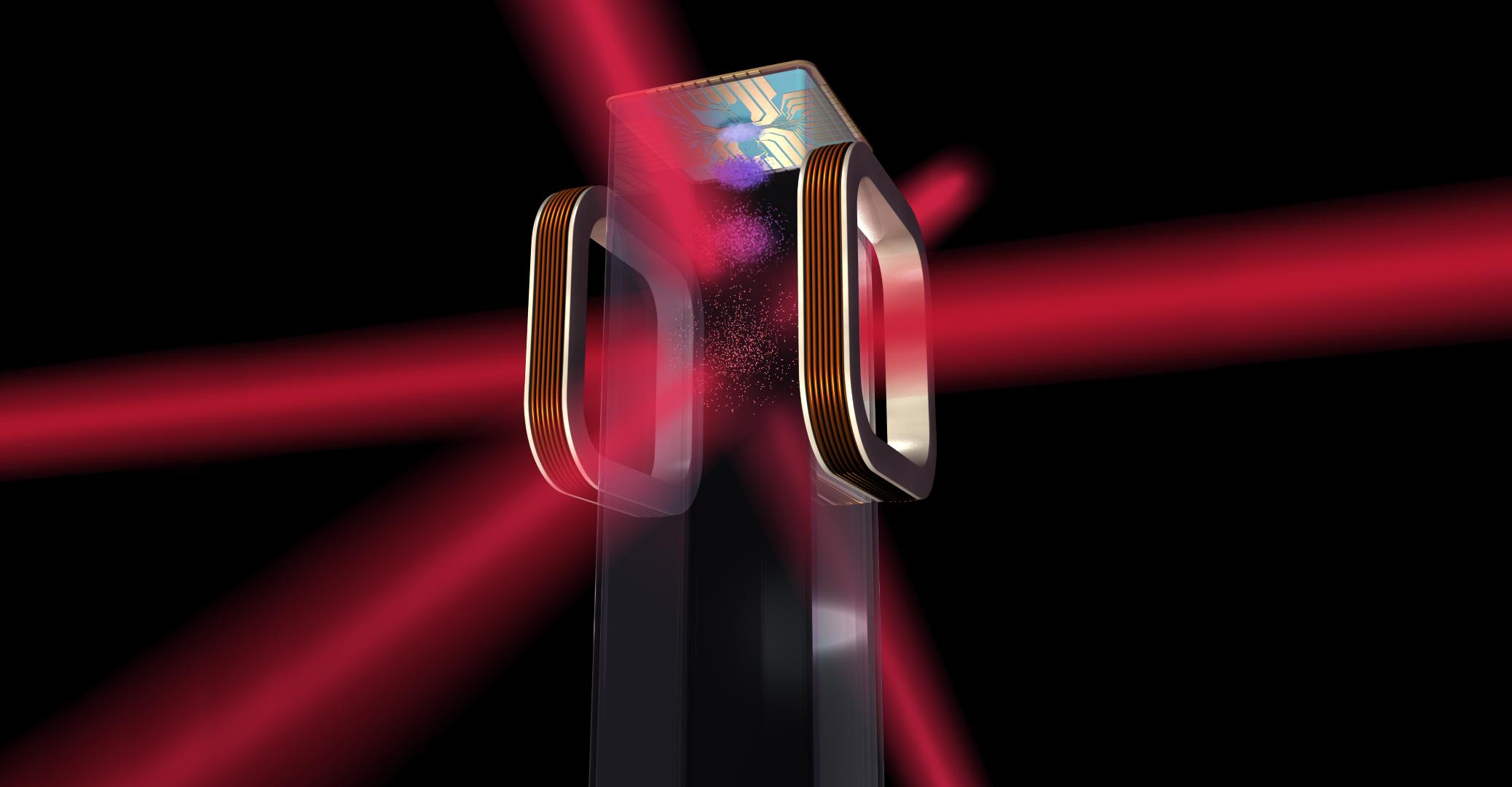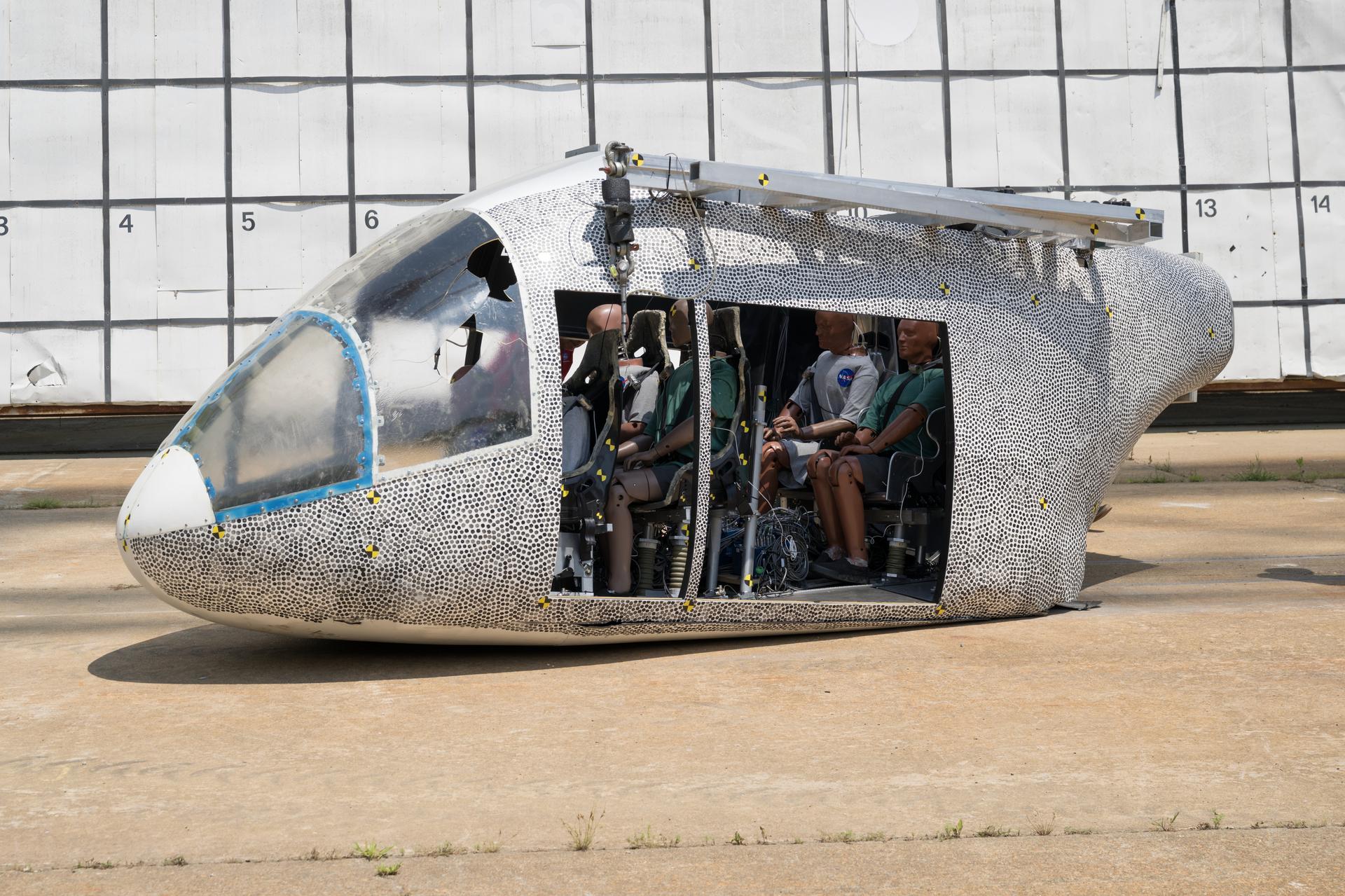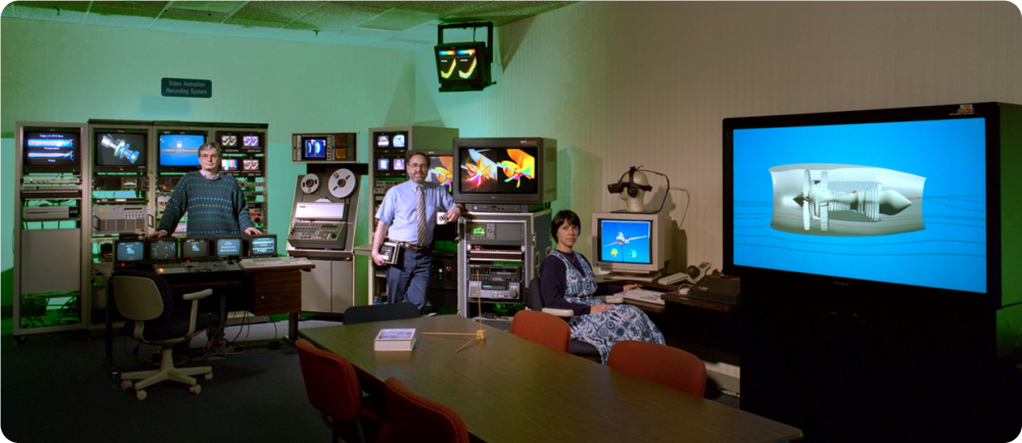1 min read
Shells of Stars Ring Quasar in Giant Elliptical Galaxy
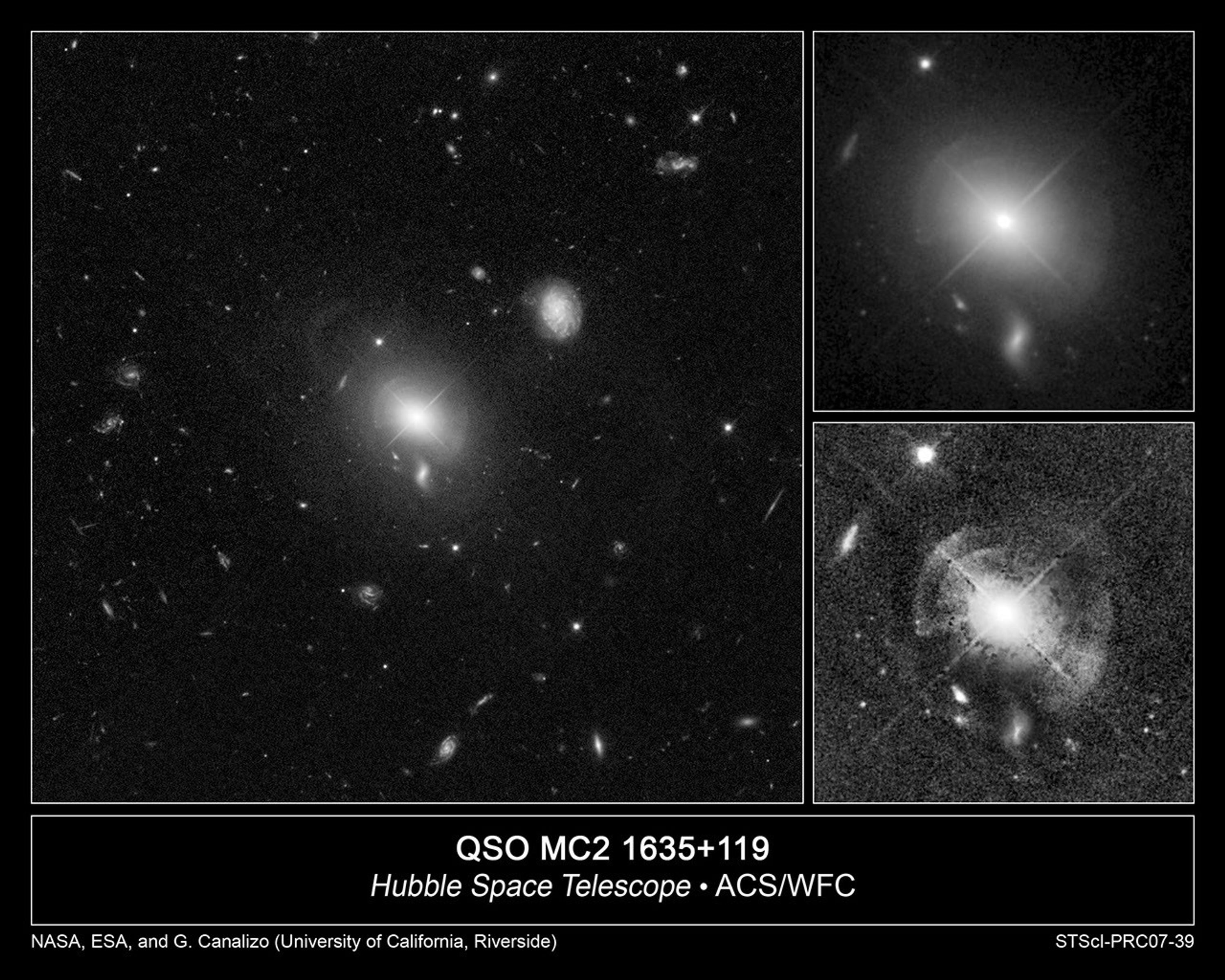
These sharp images taken with NASA's Hubble Space Telescope reveal at least five shells of stars surrounding a brilliant quasar at the heart of a giant elliptical galaxy. The image at left shows the quasar, known as MC2 1635+119, and its host galaxy [center] against a backdrop of distant galaxies. In the image at top,right, the shells can barely be seen because of the bright light from the central quasar.
The image at bottom, right was enhanced to reveal details of the faint shells. In both right-hand images, the objects below and to the left of the shells are background galaxies. A foreground star resides at top, left. The shells have never been seen before in this galaxy, located about 2 billion light-years away. They are evidence that the giant galaxy clashed with another galaxy in the relatively recent past. The shells are similar to ripples forming in a pond when a stone is tossed in. They sparkle with stars that were swept up from the encounter. The interaction may be providing enough fuel to power the quasar, which dominates the galaxy's center. This observation supports the idea that quasars are born from mergers between galaxies.
The images were taken June 28 and July 4, 2005 with Hubble's Advanced Camera for Surveys.
The observation team consists of Gabriela Canalizo and Nicola Bennert of the University of California, Riverside; Bruno Jungwiert of the University of California, Riverside/Astronomical Institute, Academy of Sciences of the Czech Republic, Prague; Alan Stockton of the University of Hawaii, Honolulu; Francois Schweizer of the Carnegie Observatories, Pasadena; Mark Lacy of the California Institute of Technology, Pasadena; and Chien Peng of the Space Telescope Science Institute, Baltimore.
About the Object
- R.A. PositionR.A. PositionRight ascension – analogous to longitude – is one component of an object's position.16h 37m 46.5s
- Dec. PositionDec. PositionDeclination – analogous to latitude – is one component of an object's position.11° 49' 49.33"
- ConstellationConstellationOne of 88 recognized regions of the celestial sphere in which the object appears.Hercules
- DistanceDistanceThe physical distance from Earth to the astronomical object. Distances within our solar system are usually measured in Astronomical Units (AU). Distances between stars are usually measured in light-years. Interstellar distances can also be measured in parsecs.About 2 billion light-years away, Redshift: The object has a redshift, z = 0.146
- DimensionsDimensionsThe physical size of the object or the apparent angle it subtends on the sky.Roughly 1.2 arcminutes (600,000 light-years or 180 kiloparsecs) wide (left)
About the Data
- Data DescriptionData DescriptionProposal: A description of the observations, their scientific justification, and the links to the data available in the science archive.
Science Team: The astronomers who planned the observations and analyzed the data. "PI" refers to the Principal Investigator.The Hubble image was created from HST data from proposal 10421 : G. Canalizo (University of California, Riverside), A. Stockton (Institute for Astronomy/University of Hawaii), M. Lacy (Spitzer Science Center/California Institute of Technology), and F. Schweizer (Carnegie Observatories/Carnegie Institution of Washington).
The science team comprises: G. Canalizo and N. Bennert (University of California, Riverside), B. Jungwiert (University of California, Riverside/Astronomical Institute, Academy of Sciences of the Czech Republic, Prague), A. Stockton (Institute for Astronomy /University of Hawaii), F. Schweizer (Carnegie Observatories/Carnegie Institution of Washington), M. Lacy (Spitzer Science Center/California Institute of Technology), and C. Peng (STScI).
- InstrumentInstrumentThe science instrument used to produce the data.HST>ACS/WFC
- Exposure DatesExposure DatesThe date(s) that the telescope made its observations and the total exposure time.June 28 and July 4, 2005, Exposure Time: 3.2 hours
- FiltersFiltersThe camera filters that were used in the science observations.F606W (V)
- Object NameObject NameA name or catalog number that astronomers use to identify an astronomical object.MC2 1635+119, MC2 1635+11.9
- Object DescriptionObject DescriptionThe type of astronomical object.Shell structure around a QSO (quasi-stellar object)
- Release DateOctober 25, 2007
- Science ReleaseHubble Spies Shells of Sparkling Stars Around Quasar
- Credit

Related Images & Videos
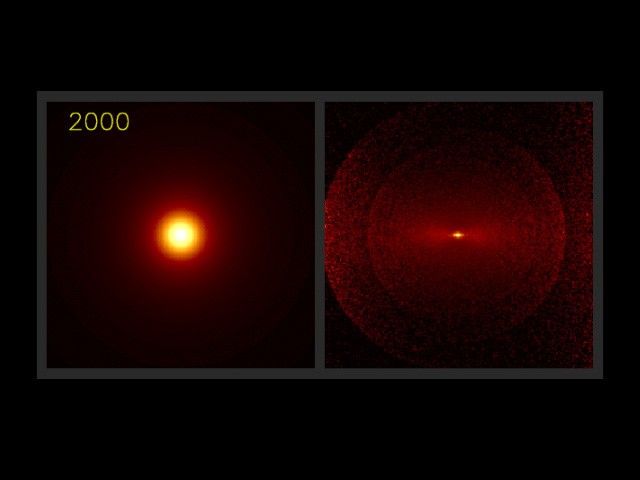
Shell Formation in a Galaxy Merger
This simulation shows the formation of shells in a head-on collision of two elliptical galaxies of different masses. A giant galaxy weighing 300 billion solar masses [left panel] collides with a galaxy that is 10 times less massive, which is coming from the right. The panel at...
Share
Details
Claire Andreoli
NASA’s Goddard Space Flight Center
Greenbelt, Maryland
claire.andreoli@nasa.gov



